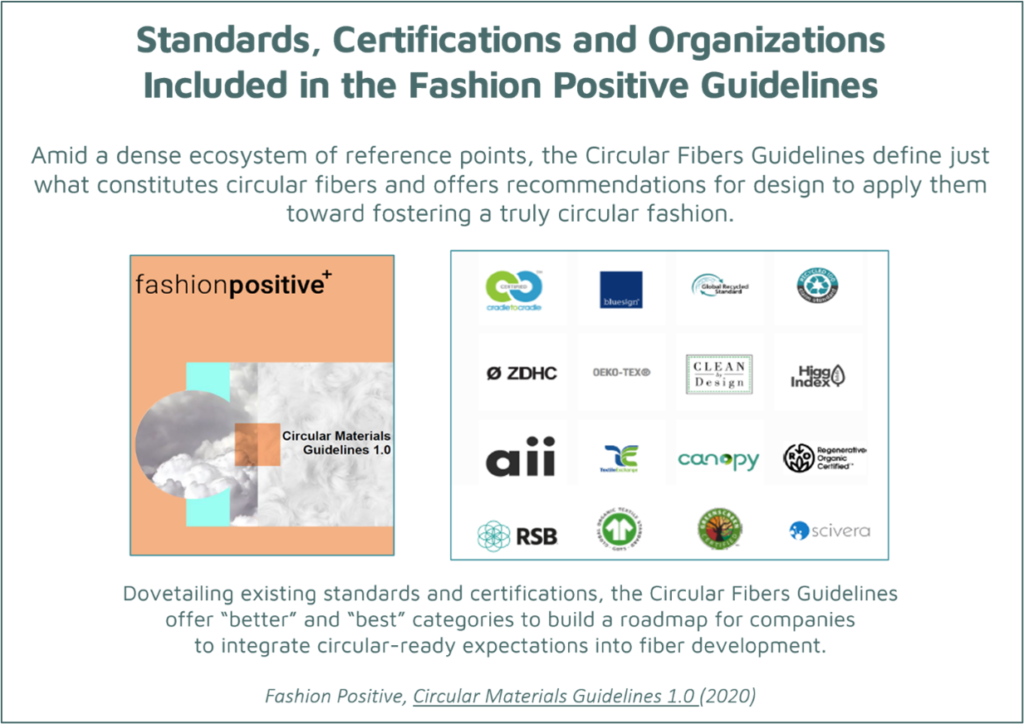On 27 January 2021, Ksapa invited 3 speakers to share their views on mainstreaming circular fibers in the textile industry. Here Ksapa identifies 5 systemic principles for the development of the circular economy in the textile industry – though also applicable to other sectors.
According to the Ellen MacArthur foundation, making circularity a systemic principle of an organization’s business model conveys substantial economic and social leverage. On a global scale, this could mean savings of up to $200 billion a year. It would also foster the creation of 700,000 jobs and a 25% reduction in greenhouse gas emissions by 2040. The pandemic crisis only double down on the urgency of mainstreaming a circular logic, for organizations to avoid being overly reliant on hyper-globalized raw material supply chains. What stands in the balance is their very resilience in the face of ongoing interconnected climate, social and digital crises.
Despite obvious benefits, the private sector has been slow to onboard circular principles. With the exception of niche markets or specific initiatives, circularity is far from being widely adopted. Here Ksapa identifies 5 systemic principles for mainstreaming circular fibers – across the textile industry primarily, but also applicable to other sectors.
1. Consumer Acceptability
The pandemic shock could have caused as much as a 30% drop in fashion’s annual revenues. The Covid-19 crisis has certainly highlighted the industry’s heavy dependence on an increasingly fragmented and opaque raw materials supply chain. Still, that is not the only factor at play.
The crisis has also prompted consumers to review their expectations of brands and their products. More and more are trying to align their purchases and lifestyles by opting for direct distribution, sustainability and ethical credentials… All these expectations push brands to question, or at least reevaluate their purpose statements. In fact, 23% of consumers expect brands to lead by example. As much as 75% of American consumers would demand companies sustain the initiatives they launched in response to the Covid-19 crisis.
Clothing brands are increasingly scrutinized on the implementation of their commitments to corporate responsibility. Social networks have greatly facilitated the reporting of socio-environmental alerts that may arise from their activities. Well calibrated, they could be a formidable tool for stakeholder dialog. But more often than not, social networks often work to the detriment of the company’s reputation and the acceptability of its activities.
2. Circularity Regulation: Favorable, But Lagging
Late in 2020, consumer protection agencies in the United Kingdom and Norway launched an investigation. The goal was to identify fraudulent behavior in communicating the environmental performance of products and services offered online. More than 500 websites in the clothing, cosmetics and food sectors have been referenced. The result? 4 out of 10 sites allegedly use fraudulent tactics regardless of consumer laws.
This points to how much brands prefer to communicate intentions rather than take concrete action to improve their sustainable performance. Regulations and initiatives that encourage product circularity and sustainability abound. But they are not sufficiently binding to propel an organization-wide model change.

That said, more and more private players are taking the lead on mainstreaming circularity. Many standards and certifications have also emerged in recent years, as shown above. This is particularly true of the textile and clothing industry. These cover fiber origination to chemical usage, responsible cultivation techniques, product circularity, working conditions etc. Fashion Positive analyzed no less than 30 standards and certifications to develop guidelines toward mainstreaming circular fibers across the fashion and textile sectors.
3. Aligning on Core Circularity Principles
Fashion Positive executive director Sasha Radovich indeed engaged with a variety of global players to develop a common vision around the use of safe and circular materials in the fashion industry. Two years ago, that effort brought textile certification and standardization bodies to work alongside major brands. Together, they reflected on the development of clean fibers, opening onto the publication of Circular Materials Guidelines in August 2020.
This guide centralizes all existing standards and norms and offers a comprehensive picture for industry to advance and encourage the mainstreaming of circular fibers. It focuses on 3 core principles. First, fibers must be thought out to be sustainable, resource efficient, non-toxic, compostable and recyclable. Second, materials should be chosen according to the available end-of-life recycling options. Finally, existing solutions must be identified and future solutions must be supported in a logic of continuous improvement.
To date, the guidelines have centered on 4 key themes ranging from feedstock, to water, chemistry and energy considerations, as summarized in the table below.

The guide ventures broad guidelines in an effort to provide greater clarity for companies. It is deliberately intended to be simple and accessible to the broadest audience possible in order not to impede or limit the scope of their action. The approach is likewise global, covering the entire value chain and lifecycle of target fibers. While circularity considerations predominate, the guidelines also seek to foster a healthy and safe manufacturing process for consumers and workers. The goal is to ultimately streamline the proposed systemic changes, in the broader push to keep materials in the proverbial loop.
This initiative clearly shows there can be no large-scale circularity without a common language. Key players must be encouraged to work together to indent which issues they share in terms of mainstreaming circular fibers. In other words, collaboration is an integral ingredient for systemic change. It enables the development of comparable processes and initiatives, so that their impact may be measured in an objective and granular manner, as part of their drive towards continuous improvement. That said, such approaches call for significant funding for both research and development.
4. Investing in a Sizable Circularity Market
That is where Alante Capital, a venture capital fund, comes in. it builds on its partners’ extensive experience in global brands to invest in innovative and scalable technologies supportive of fashion’s circular transition. Their strategy is clear. They seek to invest in innovations and tools developed with circularity in mind and with a proven positive impact across the value chain.
To that end, Alante Capital identifies high-potential technologies and identifies capital to develop. Target technologies must be capable of scale in the medium to long run. In fact, the fund tends to overlook specific initiatives targeting a niche market. Instead, the aim is to assess technologies based on their potential to industrially integrate and compete on the conventional market, both in terms of cost and quality.
Beyond fundraising, the company works with major brands to better understand their issues and priorities. This allows them to invest in the most urgently-needed solutions. By linking brands with young seedling, the fund seeks to guarantee it invests in purposeful technological solutions.
There is in fact no shortage of innovations. The circular model provides solutions at every stage, from fiber cultivation to end-of-life management. Mango Materials for instance develops biodegradable polyester fiber to address the pollution of oceans through proliferating microfibers. Lizee likewise enables brands to adapt to consumer behavior thanks to circular rental models.
The development of this ecosystem has made supply and demand relations more fluid. In so doing, the goal is to support the textile industry in adopting processes and technologies fully resilient to ongoing and future climatic and social challenges.
5. Partnering to Better Organize Supply and Demand
Satumaija Maki represents Finnish & Textile Fashion, where she coordinates textile circularity initiatives in Finland. With its 200 member companies, her organization supports the development of a local industry, particularly with regard to growing circularity expectations.
Between now and the 1st of January 2025, 6 countries including Finland have indeed undertaken to launch a separate collection systems for textiles. While Finland is known for its innovations in circularity and ecological fibers, stakeholders do not intend to stop there. The organization has therefore brought together researchers, economic actors, public authorities and non-profits to further optimize the sorting process. The goal is to openly share current market limitations and seize the opportunity to design and deliver concrete solutions for 2025.
That is precisely how Telaketju came about. This cooperation network promotes the end-of-life recycling of textiles. It streamlines the collection, sorting and further processing of textiles, as well as the underpinning circular business models. The network additionally engages with collectors and processors, automated pre-treatment and sorting agents, downstream companies, work centers organizing related social work, waste treatment plants, charities and cities.
This multi-sectoral cooperation in fact led to concrete and commercialized solutions. A prime example of this is Spinnova’s wood-based fiber, which makes the most of Finland’s natural capital. Its weave is inspired by spider webs and can be recycled indefinitely without loss of quality. Another program, Pure Waste, develops products exclusively from recycled materials.
Conclusion
The examples we cited all go to demonstrate collaboration and access to finance are critical to developing and – perhaps most of all – scaling circular business models. Though often considered through an environmental and resource management prism, circularity is bound to take social considerations as well. Human rights are indeed of particular import to the fashion industry as it still grapples with the social crisis brought to light by the collapse of the Rana Plaza in 2013. Corporate transitions may in fact only be truly circular if it they also onboard vulnerable communities in and around their supply chains as part of a just and sustainable recovery plan.
Ksapa regularly works with companies and investors to co-construct solutions to accelerate such transitions. At a time when clients, regulators and investors face ever-multiplying demands in terms of resource management for global and complex operations, our teams stand at the ready to discuss these issues further. Among the corporate, investment, multilateral, academic and non-profits organizations joining our conversation on such sensitive issues such as kickstarting circular fibers amid the ongoing upheaval were Amundi, Arup, ASOS, AXA, BASF, Bonsucro, Bouygues, Capgemini Invent, Chanel, Cornell University, Fashion That Cares, Free Assembly at Walmart, Gap, GE Power, the Laudes Foundation, L’Oréal, M&G Investments, Moth, Mulberry, the OECD, Primark, Puma, PVH Corp., RSM France, The Walt Disney Company and Worn Again Technologies.
Sona is a Consultant for the Advise team at Ksapa.
She graduate in international development from Sciences Po Paris, and has worked on sustainable models within a diverse number of industries. Previously based in Kuala Lumpur, Sona has also tackled social and societal issues for Total and the Galeries Lafayette Group and has analyzed the implementation of the Chinese carbon market from Beijing. Her experience in different markets have helped her use a global approach when building a sustainable performance.





